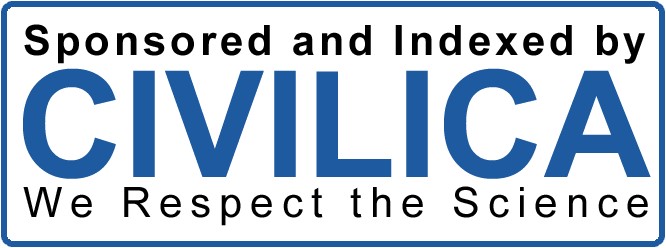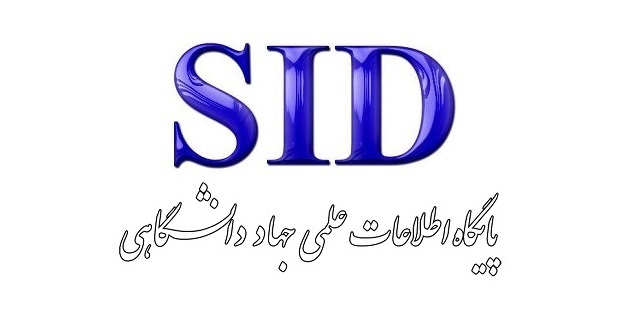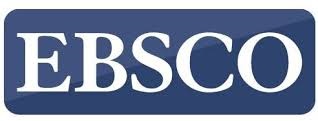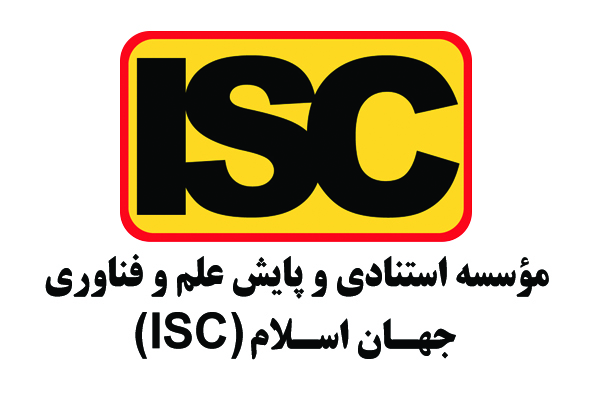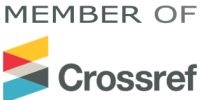طراحی مدل چابکی زنجیره تامین پایدار در صنعت نفت و گاز استان بوشهر با رویکرد آمیخته
کلمات کلیدی:
زنجیره تامین, چابکی, پایداری, صنعت نفت و گازچکیده
هدف اصلی این پژوهش طراحی مدل چابکی زنجیره تامین پایدار در صنعت نفت و گاز استان بوشهر است. در این پژوهش از رویکرد آمیخته (کیفی- کمی)، تحلیل محتوا و دیمتل فازی با ANP استفاده شد. جامعه آماری مدیران و مسئولان و کارشناسان رده میانی و رده بالای شرکتهای فعال در صنعت نفت و گاز استان بوشهر است. نمونه آماری تعداد 10 نفر از مدیران، متخصصان و صاحبنظران صنعت نفت و گاز برای هر مرحله انتخاب شد. یافتههای کیفی نشان داد که شاخصهای چابکی زنجیره تامین پایدار از عوامل زیستمحیطی (خرید سبز، طراحی و بستهبندی دوستدار طبیعت و اقتصادی، حفظ محیطزیست)، عوامل اقتصادی (پذیرش فناوری اطلاعات، پاسخگویی، سرعت، شایستگی، انعطافپذیری)، و عوامل اجتماعی (همکاری با مشتریان، خرید اخلاقی، اجتماعی بودن، رعایت قوانین، یکپارچهسازی روابط و مشارکت با تامینکنندگان) تشکیل شد. در بخش کمی در مرحله اول با استفاده از رویکرد دیمتل فازی، یافتهها نشان داد عوامل زیستمحیطی در دسته شرایط معلول و عوامل اقتصادی و عوامل اجتماعی در دسته متغیرهای علت قرار میگیرند. یافتههای ANP نشان داد در میان شاخصهای عوامل زیستمحیطی، شاخص خرید سبز با وزن 33/0 بیشترین وزن را دارد، بعد از آن شاخص حفظ محیط زیست با وزن 087/0 و شاخص طراحی و بستهبندی دوستدار طبیعت و اقتصادی با وزن 086/0 قرار میگیرند. در میان شاخصهای عوامل اقتصادی، شاخص سرعت با وزن 0524/0، انعطافپذیری با وزن 0513/0، شایستگی با وزن 0505/0بیشترین وزن را دارند. در میان شاخصهای عوامل اجتماعی، شاخص همکاری با مشتریان با وزن 0439/0 و شاخص رعایت قوانین با وزن 0438/0 دارای بیشترین وزن است.
دانلودها
مراجع
Abrokwah-Larbi, K. (2024). Transforming Metaverse Marketing Into Strategic Agility in SMEs Through Mediating
Roles of IMT and CI: Theoretical Framework and Research Propositions. Journal of Contemporary Marketing
Science, 7(1), 56-83. https://doi.org/10.1108/jcmars-08-2023-0034
Al-Zabidi, A., Rehman, A. U., & Alkahtani, M. (2021). An approach to assess sustainable supply chain agility for a
manufacturing organization. Sustainability, 13(4), 1752. https://doi.org/10.3390/su13041752
Ali, H., & Siddiqui, D. A. (2019). Influence of Supply Chain Agility on Profitability: Evidence from Pakistan. SSRN.
https://doi.org/10.2139/ssrn.3510559
Baniasadi, T. (2024). Comparison of Executive Function and Working Memory among Children with High and Low
Levels of Physical Activity. International Journal of Education and Cognitive Sciences, 5(3), 9-15.
https://doi.org/10.61838/kman.ijeas.5.3.2
Barve, A. (2011). Impact of supply chains agility on customer satisfaction. 2010 International Conference on E-Business,
Management and Economics, IPEDR,
Boubaker, S., Jemai, Z., Sahin, E., & Dallery, Y. (2019). Supply Chain Agility: Review of Situations. ICORES,
Chan, A. T., Ngai, E. W., & Moon, K. K. (2017). The effects of strategic and manufacturing flexibilities and supply chain
agility on firm performance in the fashion industry. European Journal of Operational Research, 259(2), 486-499.
https://doi.org/10.1016/j.ejor.2016.11.006
Dubey, R., Bryde, D. J., Foropon, C., Graham, G., Giannakis, M., & Mishra, D. B. (2020). Agility in humanitarian supply
chain: an organizational information processing perspective and relational view. Annals of Operations Research, 1-
https://doi.org/10.1007/s10479-020-03824-0
Escamilla, R., Fransoo, J. C., & Tang, C. S. (2021). Improving agility, adaptability, alignment, accessibility, and
affordability in nanostore supply chains. Production and Operations Management, 30(3), 676-688.
https://doi.org/10.1111/poms.13309
Fayezi, S., Zutshi, A., & O'Loughlin, A. (2017). Understanding and development of supply chain agility and flexibility:
a structured literature review. International Journal of Management Reviews, 19(4), 379-407.
https://doi.org/10.1111/ijmr.12096
Goudarzi, G., Mohammadi, M., & Bakhtiyari, H. (2006). Agile Supply Chain: Concepts, Requirements, and Barriers.
Second Conference on Logistics and Supply Chain,
Hamzehlou, M. (2024). System Dynamics Model for an Agile Pharmaceutical Supply Chain During COVID‑19
Pandemic in Iran. PLoS One, 19(1), e0290789. https://doi.org/10.1371/journal.pone.0290789
Jamalpour, H. (2021). Investigation and Analysis of Factors Affecting the Improvement of Lean Supply Chain Agility
Using the AHP Method. Apadana Quarterly Journal of Industrial Engineering Studies, 1(1), 9-20.
https://aies.apadana.ac.ir/downloadfilepdf/20693f4c3fb13d6822cb51a6a3d24b91
Kazemi Najafabadi, A., & Ghafari, A. (2018). Development of Domestic Equipment Manufacturing Industry for the
Upstream Oil Sector; Evaluation of the Legal System within the Framework of 'Science and Technology' Policies.
Energy Law Studies, 4(1), 211-239. https://jrels.ut.ac.ir/article_68058.html
Macclever, A., Annan, J., & Boahen, S. (2017). Supply chain flexibility, agility and firm performance. European Journal
of Logistics, Purchasing and Supply Chain Management, 5(3), 13-40. http://www.eajournals.org/wpcontent/uploads/Supply-Chain-Flexibility-Agility-And-Firm-Performance.pdf
Rahimi, A., Raad, A., Alamtabriz, A., & Motameni, A. (2019). Providing a model for supply chain agility of groundbased military products and its impact on supply chain performance. International Journal of Industrial Engineering
& Production Research, 30(3), 353-375. https://jimp.sbu.ac.ir/article_87241.html
Rehman, A. U., Al-Zabidi, A., AlKahtani, M., Umer, U., & Usmani, Y. S. (2020). Assessment of supply chain agility to
foster sustainability: fuzzy-DSS for a Saudi manufacturing organization. Processes, 8(5), 577.
https://doi.org/10.3390/pr8050577
Swafford, P. M., Ghosh, S., & Murthy, N. (2006). The antecedents of supply chain agility of a firm: scale development
and model testing. Journal of Operations Management, 24(2), 170-188. https://doi.org/10.1016/j.jom.2005.05.002
Tayyaran, S., Toloie-Eshlaghy, A., Radfar, R., & Purebrahimi, A. R. (2019). Agent-based model developed to assess
supply chain agility (Case study: Institute of higher education, science and research branch of Tehran). Journal of
System Management, 5(1), 1-18. https://www.sid.ir/fileserver/jf/390139910404.pdf
Wu, K. J., Tseng, M. L., Chiu, A. S., & Lim, M. K. (2017). Achieving competitive advantage through supply chain agility
under uncertainty: A novel multi-criteria decision-making structure. International Journal of Production Economics,

دانلود
چاپ شده
ارسال
بازنگری
پذیرش
شماره
نوع مقاله
مجوز
حق نشر 2024 تکنولوژی در کارآفرینی و مدیریت استراتژیک

این پروژه تحت مجوز بین المللی Creative Commons Attribution-NonCommercial 4.0 می باشد.



